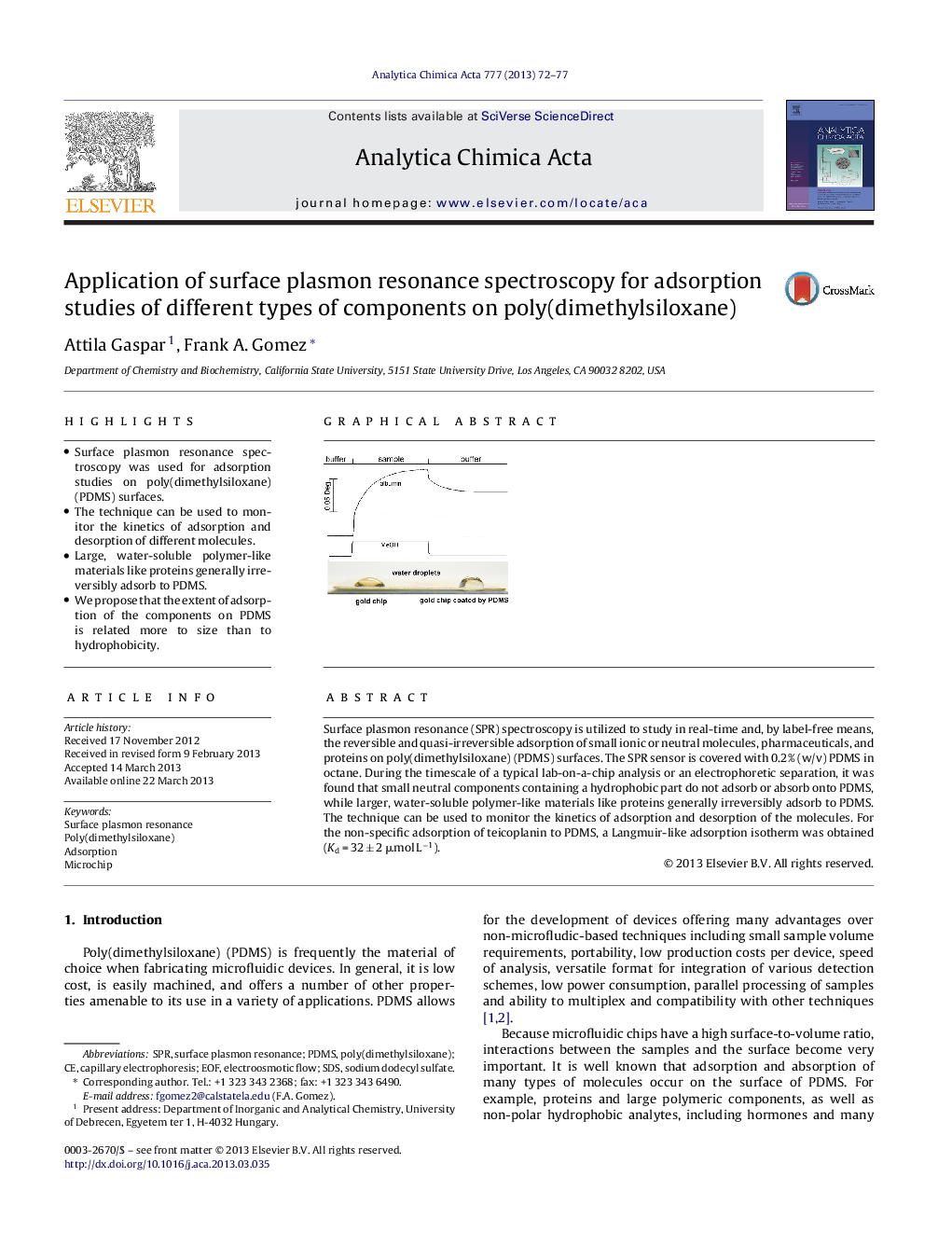| Article ID | Journal | Published Year | Pages | File Type |
|---|---|---|---|---|
| 1164829 | Analytica Chimica Acta | 2013 | 6 Pages |
•Surface plasmon resonance spectroscopy was used for adsorption studies on poly(dimethylsiloxane) (PDMS) surfaces.•The technique can be used to monitor the kinetics of adsorption and desorption of different molecules.•Large, water-soluble polymer-like materials like proteins generally irreversibly adsorb to PDMS.•We propose that the extent of adsorption of the components on PDMS is related more to size than to hydrophobicity.
Surface plasmon resonance (SPR) spectroscopy is utilized to study in real-time and, by label-free means, the reversible and quasi-irreversible adsorption of small ionic or neutral molecules, pharmaceuticals, and proteins on poly(dimethylsiloxane) (PDMS) surfaces. The SPR sensor is covered with 0.2% (w/v) PDMS in octane. During the timescale of a typical lab-on-a-chip analysis or an electrophoretic separation, it was found that small neutral components containing a hydrophobic part do not adsorb or absorb onto PDMS, while larger, water-soluble polymer-like materials like proteins generally irreversibly adsorb to PDMS. The technique can be used to monitor the kinetics of adsorption and desorption of the molecules. For the non-specific adsorption of teicoplanin to PDMS, a Langmuir-like adsorption isotherm was obtained (Kd = 32 ± 2 μmol L−1).
Graphical abstractFigure optionsDownload full-size imageDownload as PowerPoint slide
